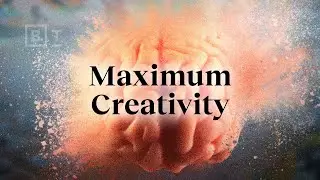The Science of Learning: How to Turn Information into Intelligence | Barbara Oakley | Big Think
The Science of Learning: How to Turn Information into Intelligence
New videos DAILY: https://bigth.ink
Join Big Think Edge for exclusive video lessons from top thinkers and doers: https://bigth.ink/Edge
----------------------------------------------------------------------------------
Cramming for a test and having a hard time understanding something? Might be best to go away and come back after a while. Your brain is constantly fluctuating between a "learning" mode and an "understanding" mode. When you're sitting there reading (and re-reading!) a textbook, unable to make sense of it, your brain is actually learning. It just takes the decompressing part of your brain for it to all be unpacked. It's called the neural chunk theory and you can learn to utilize it to your advantage by learning how to study differently; small bursts of inactivity and breaks can really make a big difference in how to memorize seemingly difficult information by combining bigger and bigger "chunks" of information until you understand the big picture. It's fascinating stuff.
Barbara Oakley's most recent book is Mindshift
Break Through Obstacles to Learning and Discover Your Hidden Potential
----------------------------------------------------------------------------------
BARBARA OAKLEY:
Barbara Oakley, PhD, is a professor of engineering at Oakland University in Rochester, Michigan, and Ramón y Cajal Distinguished Scholar of Global Digital Learning at McMaster University. Her research involves bioengineering with an emphasis on neuroscience and cognitive psychology. Alongside legendary neuroscientist Terrence Sejnowski, Dr. Oakley teaches two massive open online courses (MOOCs), 'Learning How to Learn,' the world's most popular course, and 'Mindshift,' the companion course to her most recent book of the same title.
----------------------------------------------------------------------------------
TRANSCRIPT:
BARBARA OAKLEY: A very important idea that people are often unaware of is the fact that we have two completely different ways of seeing the world, two different neural networks we access when we’re perceiving things.
So what this means is when we first sit down to learn something—for example, we’re going to study math. You sit down and you focus on it. So you focus and you’re activating task-positive networks. And then what happens is you’re working away and then you start to get frustrated. You can’t figure out what’s going on. What’s happening is you’re focusing and you’re using one small area of your brain to analyze the material. But it isn’t the right circuit to actually understand and comprehend the material. So you get frustrated. You finally give up, and then when you give up and get your attention off it it turns out that you activate a completely different type of or set of neural circuits. That’s the default mode network and the related neural circuits. So what happens is you stop thinking about it, you relax, you go off for a walk, you take a shower. You’re doing something different. And in the background this default mode network is doing some sort of neural processing on the side. And then what happens is you come back and voila, suddenly the information makes sense. And, in fact, it can suddenly seem so easy that you can’t figure out why you didn’t understand it before. So learning often involves going back and forth between these two different neural modes – focus mode and what I often call diffuse mode which involves **** resting states. You can only be in one mode at the same time
So you might wonder, is there a certain task that is more appropriate for focus mode or diffuse mode? The reality is that learning involves going back and forth between these two modes. You often have to focus at first in order to sort of load that information into your brain and then you do something different, get your attention off it and that’s when that background processing occurs. And this happens no matter what you’re learning. Whether you’re learning something in math and science, you’re learning a new language, learning music, a dance. Even learning to back up a car. And think about it this way. Here’s a very important related idea and that is that when you’re learning something new you want to create a well practiced neural pattern that you can easily draw to mind when you need it. So this is called a neural chunk and chunking theory is incredibly important in learning. So, for example, if you are trying to learn to back up a car when you first begin it’s crazy, right. You’re looking all around. Do you look in this mirror or this mirror or do you look behind you? What do you do? It’s this crazy set of information. But after you’ve practiced a while you develop this very nice sort of pattern that’s well practiced. So all you have to do is think I’m going to back up a car...
Read the full transcript at https://bigthink.com/videos/barbara-o...































